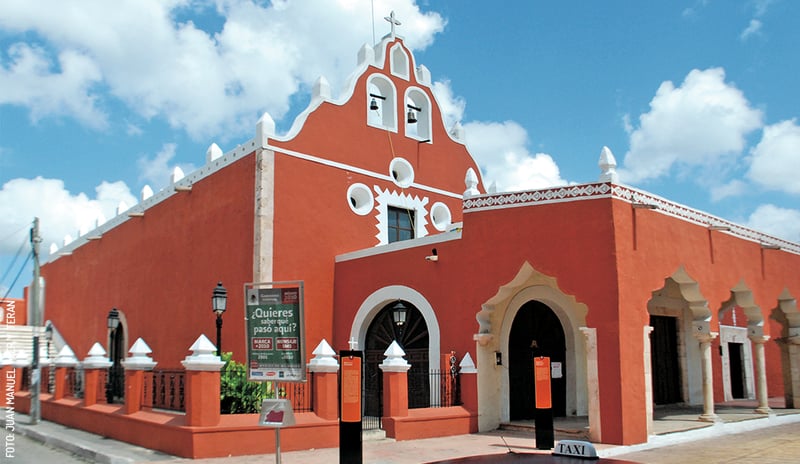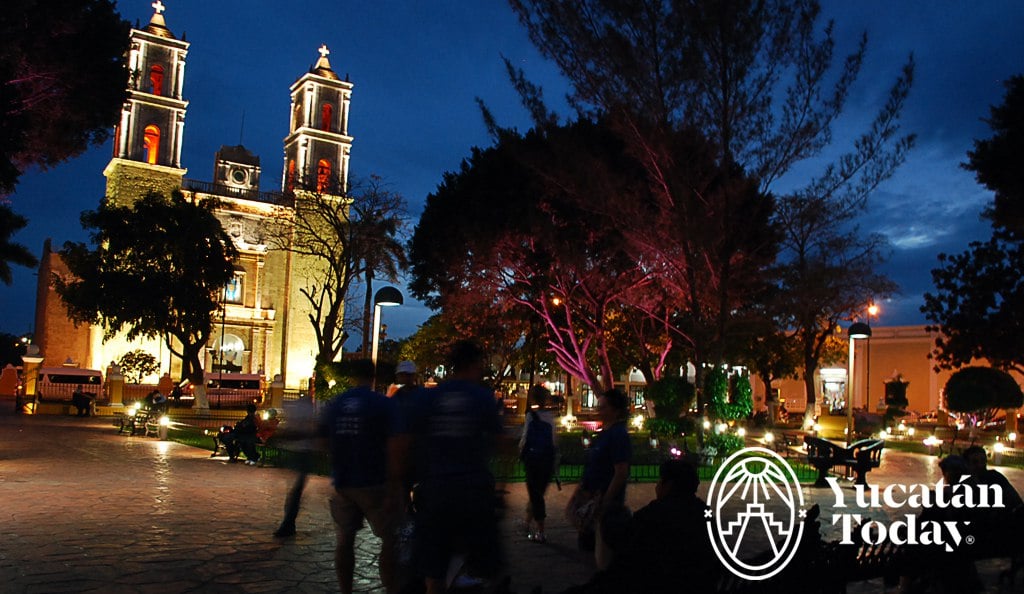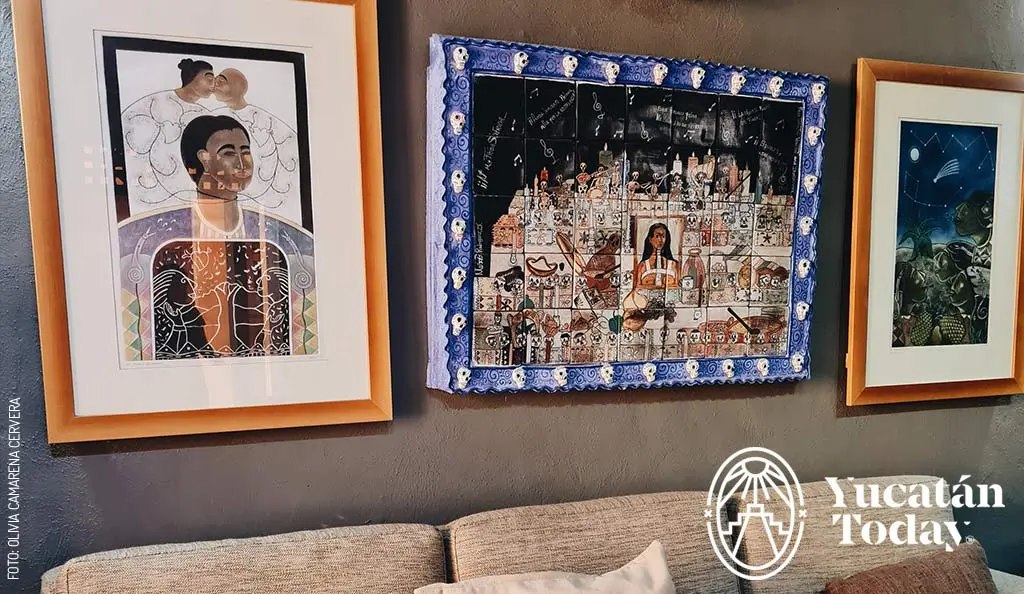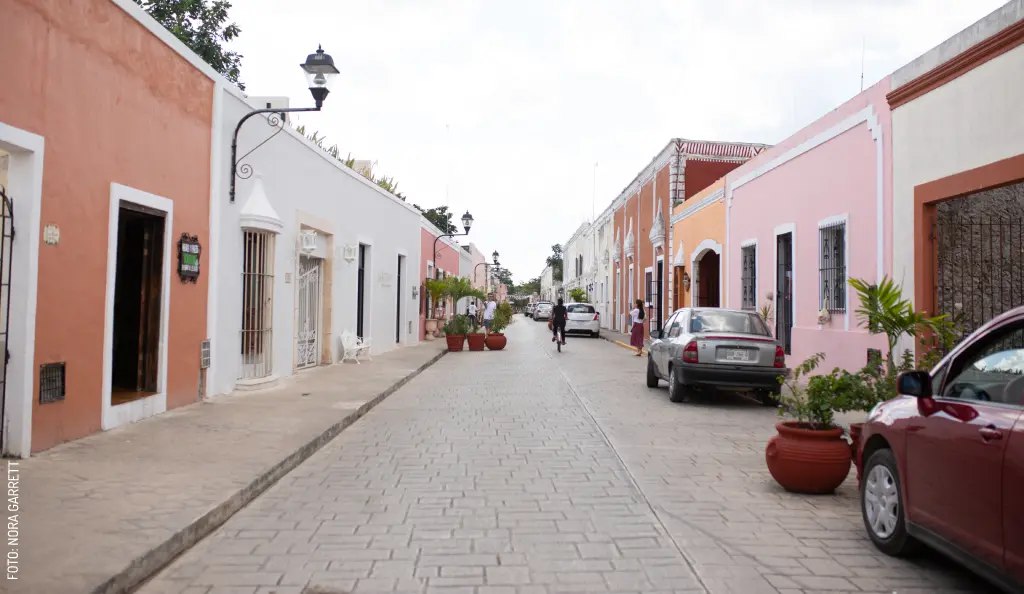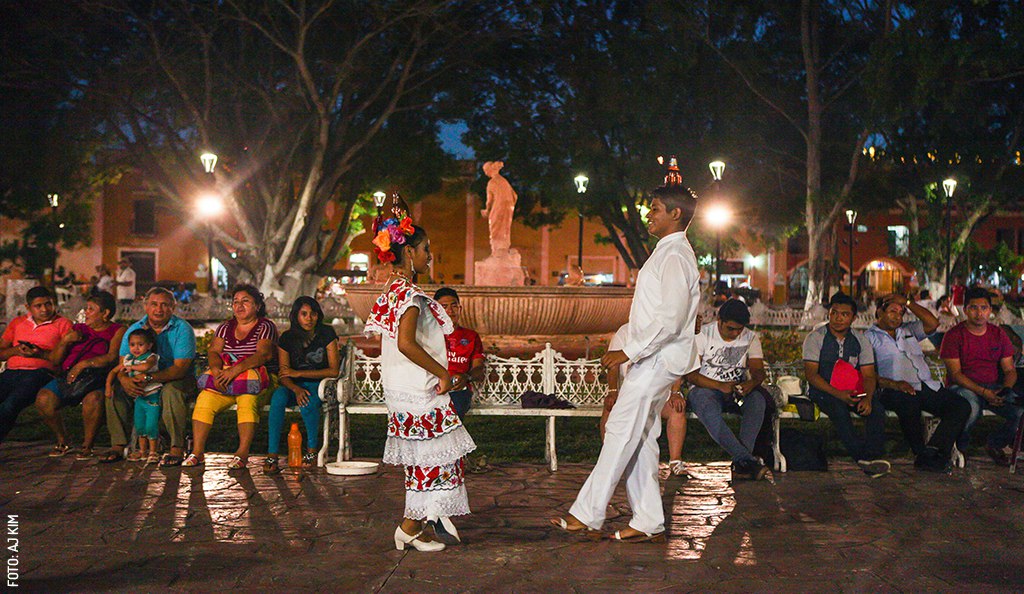The Magical Town of Valladolid
Located halfway between Mérida and Cancún, the city of Valladolid was designated a Pueblo Mágico (Magical Town) in August 2012. It's a picturesque colonial city with neighborhoods of great majesty and beauty, earning it the nickname "La Sultana del Oriente (The Sultana of the East)" since 1823. Valladolid boasts many treasures that make it a Magical Town, including its beautiful streets, churches, cuisine, and people. What this city is not lacking is peace, though this was not always the case.

The History of Valladolid
Valladolid was founded by Francisco de Montejo "El Mozo" in 1543 and gained city status in 1823. It's the place where two major events in Mexican history occurred: the Caste War in 1847 and the first spark of the Mexican Revolution (the first armed uprising in the country against Porfirio Díaz's re-electionism) in 1910, which is celebrated every year on June 3 with various sports and cultural events, as well as a reenactment of the event.
In the spring of 2012, several sections of Valladolid were declared Federal Historic Monuments Zones: the Municipal Palace, the House of Culture, Casa de los Portales (House of the Portals), the Church of Saint Servatius, the Francisco Cantón Rosado Main Square, the Municipal Bazaar, the Crafts Center, the Museum of San Roque (Saint Roch), and Parque de los Héroes (Park of the Heroes). The colonial buildings painted in pastel colors add a special touch. Take a stroll while admiring the architecture and façades of the houses and mansions.
Valladolid, The Sultan of the East
Valladolid is known by two nicknames: "La Sultana del Oriente" and also "La Perla del Oriente" (The Pearl of the East). Both are well-deserved titles due to the architectural beauty of its colonial buildings (such as the Convent of Saint Bernardino of Siena, the Municipal Palace, the Church of Saint Servatius, and the Museum of San Roque, among others); its architectural heritage from the 19th and early 20th centuries (the Ex Telar de la Aurora, the Francisco Cantón Rosado Central Park, and the railroad station), and its vision to become a tranquil and picturesque destination, in touch with nature and with eyes set on the future.
What to see in Valladolid, México

Francisco Cantón Rosado Park in Valladolid
Valladolid’s main square is always vibrant. You'll find it filled with local vendors offering crafts, and delicious treats like ice cream, Marquesitas, churros, corn on the cob, and other treats. Francisco Cantón Rosado Park is the meeting point for several tourist bus groups visiting Chichén Itzá in the morning from Cancún and the Riviera Maya, so if you're there in the afternoon, you'll witness a radical transformation: from being a quiet picturesque square, it turns into a stage for Maya dances, music, and lively activity.
The Saint Servatius Church
Located in the center of Valladolid, on the south side of the main square, on Calle 41 x 40 y 42, stands the church dedicated to Saint Servatius (a variant of Saint Gervasius). Originally, the church, erected on March 24, 1545, by Father Francisco Hernández, faced west (towards Rome) like most religious buildings of the colonial period. However, in 1703, the church was the scene of a crime of passion known as "the mayors' crime"; considered desecrated, it had to be partially demolished and rebuilt, now facing north. On the west side, its main portico was preserved, with the original statues of Saint Peter and Saint Paul.
La Calzada de los Frailes
Walking along Calzada de los Frailes is a must-do: with its unique shops, restaurants, and hotels, it's one of the prettiest streets in Valladolid. Calzada de los Frailes connects the center of Valladolid with the famous Convent of Saint Bernardino of Siena, but this path is a journey in itself. Don't miss the opportunity to take incredible photos of the beautiful colonial and rustic buildings, decorated shops, and unique façades. Take your time to wander around, pop into the shops, and treat yourself to some ice cream or coffee at one of the local spots.
The Zací cenote (pronounced Sah-kee)
Valladolid boasts a huge cenote right in the city’s center, just a few blocks from Francisco Cantón Park: the Zací cenote (Calle 37 x 36). You'll be amazed by the turquoise-colored water and the space that extends around it; if swimming works up your appetite, there's a regional restaurant onsite, with a view of the cenote.
Museums in Valladolid, México
Casa de los Venados
Casa de los Venados (The House of the Deer) is a private home covering 1,800 square meters, which now serves as a museum, thanks to its huge collection of Mexican popular and contemporary art. It is owned by an American couple who spent almost ten years renovating this masterpiece of colonial architecture. There are tours (in English and Spanish) almost every day at 10 am, but reservations are recommended. There are more than 3,000 works of art in this collection, one of the most comprehensive and extensive collections of Mexican popular art in private hands.
Calle 40 #204 x 41 y 43, Centro, Valladolid
Donation: $100 pesos (for local charity organizations)
Tel: 985 856 2289
Museum of San Roque
This small museum houses historical artifacts from different periods of Valladolid’s history, including Maya relics and the city's founding by the Spanish. It also includes the area known as Parque de los Héroes, a tranquil garden dedicated to the memory of the authors of the First Spark of the Mexican Revolution, who were shot at this same site.
Calle 41 #193 x 38, Centro, Valladolid
Sistema de Información Cultural: Museo de San Roque
Tel: 985 856 2529 and 985 856 1866
Tue - Fri: 9 am - 8 pm, Sat & Sun: 9 am - 6 pm
Free admission
Ex Convent of Saint Bernardino of Siena Museum
 In addition to the history of the Franciscans who inhabited it and the sacred art it houses, this museum exhibits various artifacts from the Caste War, recovered from the cenote located beneath the convent.
In addition to the history of the Franciscans who inhabited it and the sacred art it houses, this museum exhibits various artifacts from the Caste War, recovered from the cenote located beneath the convent.
Tue - Sun: 9 am - 5 pm
Admission: $40 pesos (general), $20 pesos (Sundays, students, and seniors with INAPAM card). Children under 10 years old enter for free.
Museum of Ethnic Clothing of México (MUREM)
As its name suggests, this venue houses an impressive collection of traditional costumes from different regions of the country, from one end to the other. The museum is sustained by voluntary donations; once you tour it, you'll see why it's worth showcasing your generosity.
Choco-Story Museum
The story of the "domestication" of cocoa (that is, its transformation from bitter seed to everyone's favorite treat) is fascinating. Discover how this legacy of México conquered the world at Choco-Story, a museum where history becomes increasingly delicious.
Calle 40 x 37 y 39, Centro, Valladolid
Tel: 999 289 9914
Every day, 9 am - 7 pm
www.choco-storymexico.com
IG: chocostory.mexico
FB: ChocoStoryMexico
Casa Ramón Mendoza
This small, free museum offers a glimpse into the daily life of Valladolid of yesteryears through the life of a notable Vallisoletano: Professor Ramón Mendoza, a lover of art, photography, and baseball, captured several snapshots of the city that are well worth the visit.
Calle 41-A #230 x 45 y 49, Sisal (inside the Idilio restaurant)
IG: casaramonmendoza
FB: Casa Ramón Mendoza, centro cultural y gastronómico
Free admission
The five Barrios (neighborhoods) of Valladolid
The feast of the Virgin of Candelaria
From January 26 to February 3, the festivities in honor of the Virgin of Candelaria are celebrated, which translates into a week of religious and commercial celebrations.
When it comes to religious festivities, in the popular beliefs of Valladolid, there are various apparitions of the Virgin to peasants, collective miracles such as ending an epidemic of smallpox that struck the entire population, and other personal requests for health, among others. It is also said that the Virgin has survived fires and prohibitions of religious cults, showing her power to perform miracles and maintain the faith of Valladolid's inhabitants.
In gratitude, the townspeople erected a church in the Candelaria neighborhood, one of the most beautiful in the city, which has become the main venue for religious celebrations. For generations, the tradition of celebrating the Virgin of Candelaria in Valladolid has been maintained. During the last week of January and for more than 17 days, novenas (nine-day prayers), masses, rosaries, walks, and pilgrimages of fervent devotees are organized, as well as the traditional "Mañanitas" to the Virgin on the night of February 1. The guilds practically come every day in an organized manner to make their offerings and thanks to the patron saint of the city.
Other popular festivals in Valladolid
Valladolid's delicacies
When it comes to dining, you're in the perfect city for exquisite Yucatecan cuisine. Valladolid is renowned for its famous dishes, including Lomitos (Valladolid-style pork loin), Longaniza, and Escabeche Oriental. But in Valladolid, tradition blends seamlessly with modernity, boasting a diverse and modern culinary scene, offering everything from modern Mexican to international cuisine. For a more detailed overview, read our article "The Wide Culinary Range of Valladolid, Yucatán".
What to visit near Valladolid?
Valladolid is the perfect destination for a relaxing getaway of 2 to 3 days. For accommodation, there are options for all budgets and tastes. Valladolid is surrounded by wonderful attractions,, such as the Ek Balam archaeological zone, just 20 minutes north of Valladolid, on the way to Tizimín.
In Valladolid and its surrounding areas there are plenty of cenotes you can visit, such as X’Kekén y Zací, just to mention a couple; check out a more complete guide by reading our article “Routes to choose the perfect cenote”.
How to get to Valladolid:
By car: Take the road to Cancún; if you’re not in a hurry, you can take the highway, which traverses several villages, or the toll road. If you’re taking the toll road, once you get to the service station from Mérida, keep going for about a mile; the exit will be on your right.
By public transportation: By bus, ADO offers several daily departures from the Centro Histórico station. By train, Tren Maya has two daily departures leaving from Mérida Teya.
Download your maps:
Photography by Ivábn Gabaldón, Esteban Dupinet, AJ Kim for use in Yucatán Today.









